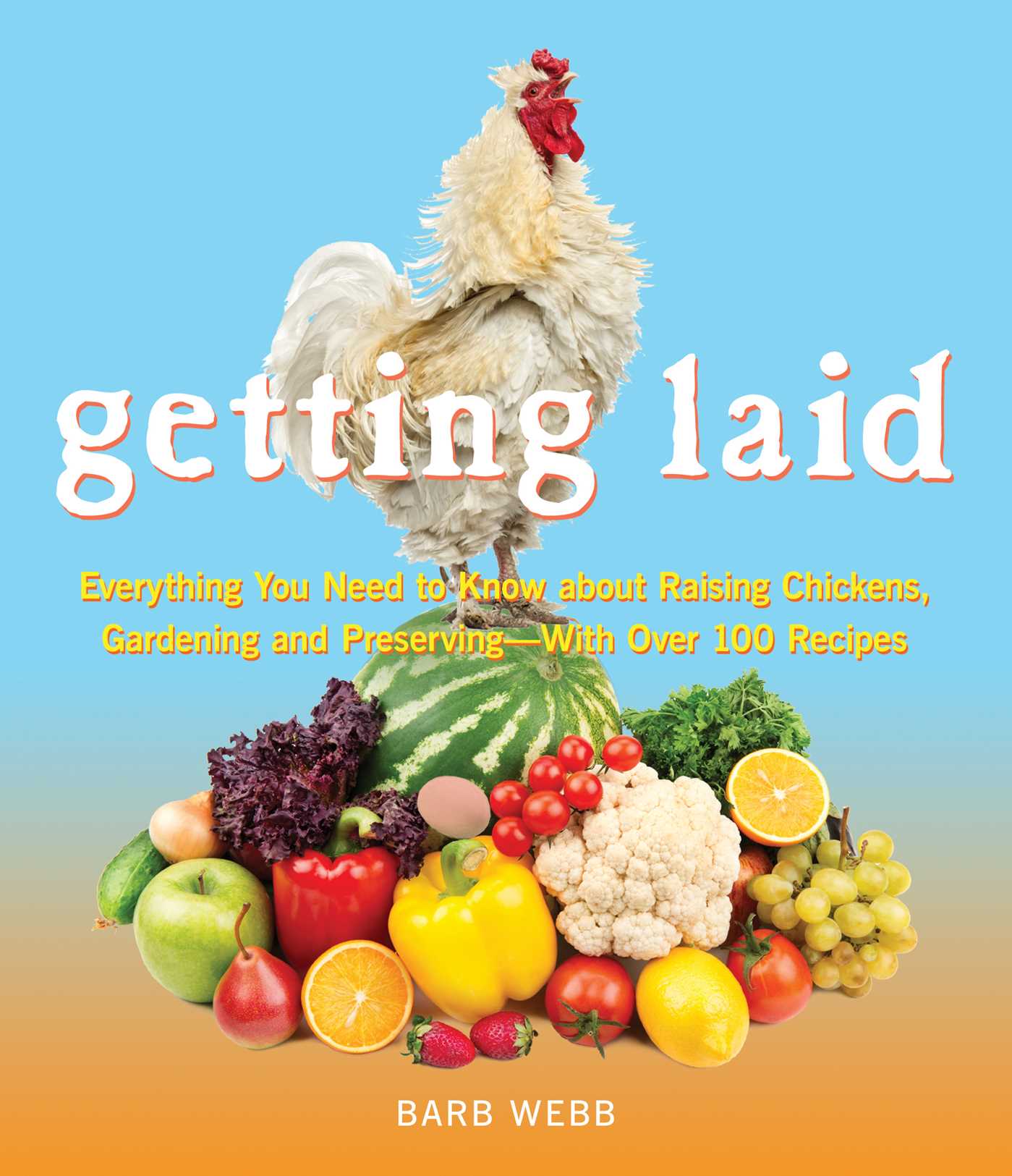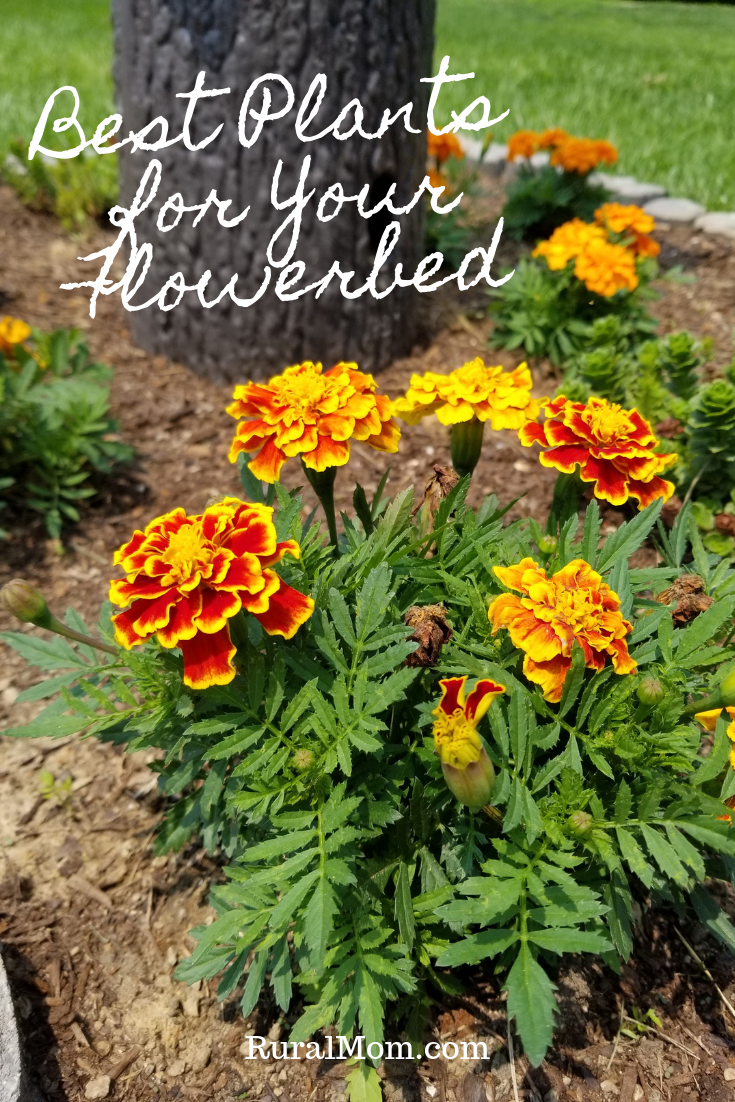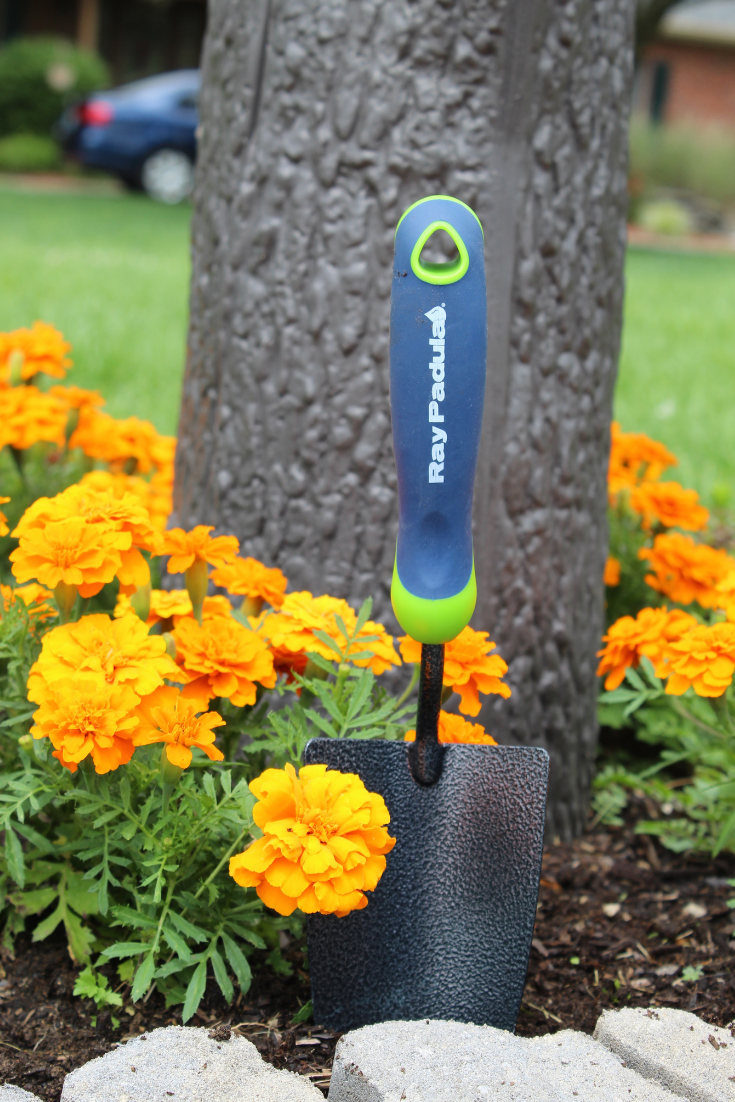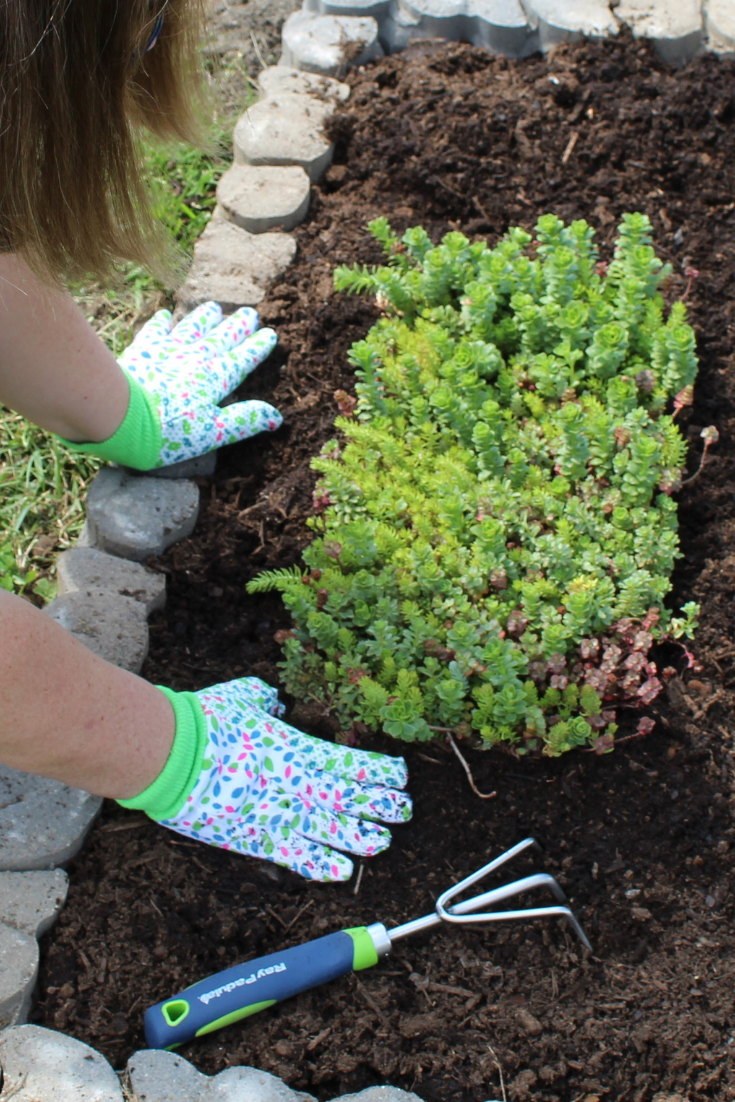Colors, textures, blooms, and types–so many choices are available to the gardener in creating a beautiful yard. One thing’s for certain, a flowerbed brings vibrancy and joy to every landscape!
Thanks to our partnership with Ray Padula gardening tools, we’re creating a mailbox garden flowerbed this summer and sharing all our best tips including how to choose the best plants for your flowerbed.
With so many flowers to choose from, it’s often tough to know which direction to go. Use these helpful tips to make choices easier.
Starting Your Flowerbed Project
Upon entering the nursery site, senses are assaulted with the aroma and colors of plants, all seemingly begging to go to be taken home. Row upon row or colorful flowers; short ones, tall ones, thick ones, thin ones. Before grabbing plants and plopping them in the ground, there are decisions that the gardener must make.
Outside of selecting which flowers you want in your flowerbed, you need to determine a number of other things first like:
- what is the square footage of your flower bed?
- will you need topsoil for your flower bed?
- is a ground-cover something you need to help control weeds?
- is the area you are planning to plant a flowerbed in a sunny or shady spot?
- are there other plants nearby that you may need to take into consideration?
- do you have adequate soil drainage in the area you want to plant your flowerbed?
- will you need any special tools like a bulb planter?
- do you want to edge the flowerbed with a fence or stonework?
Once you’ve made these basic decisions, you can start building your supply list and then begin researching flowers.
Choosing Which Plants Make the Picture
Requirements for shade or sun tolerant plants are specific. Use sun or partial sun loving plants in areas that received four to six hours of sun per day, preferably morning sun. Plants requiring sun can survive a shady area but will not thrive as well as they will in a full sun area. Shade plants can’t tolerate direct sunlight for any length of time without endangering their survival.
The picture that will become the gardener’s canvas requires perspective and a focal point. You can create this by varying plant sizes, have a central focal point, or varying plant varieties.
Lower growing plants should be placed at borders and the front edges with progressively taller plants behind these. This gives perspective to the flowerbed but can look predictable. Planting in batches, mixing colors, and textures can break up patterns to create more eye appeal.
Minimize garden planting and maximize the visual impact of the garden area by mixing the use of annuals, perennials, and bulbs. To ensure a fresh looking garden for many months plan the blooming times to range from early spring to late fall. The types of plants to consider are annuals, biennials, perennials, and bulb plants.
Think about the seasons in your area and stages of your garden flowerbed. For our mailbox garden, I thought about the look I wanted to achieve short term this summer and longer term for the next year. Planting Marigold annuals now gave me instant blooms to enjoy. Mixing in Sedum perennial tiles will help keep the flowerbed colorful in the fall and winter. I plan to also drop in bulbs this fall so that we’ll have some lovely spring blooms.
Using Different Plant Types
Annual plants only have a single season life cycle. They must be planted after the last hard frost in order to survive and die at the end of the growing season. Even cold tolerant varieties such as winter Pansies and Kale will die once cold weather and hard frost times have returned. Annuals are great for filling in beds and mixing in with other plant types. The most popular annuals include Marigolds, Petunias, Pansies, Sweet Peas, Begonias, and Geraniums.
Biennial plants take two years to complete their life cycle; growing the plant structure the first season and flowering and seeding the following year. A biennial plant is often confused with a perennial plant due to the ability to come back for a repeat season, some even re-seeding for an even longer life cycle. Hollyhock, Foxglove and Parsley are popular biennial plants.
Perennial plants return year after year with proper care. Depending on the plant and Hardiness zone where the plant grows, it may take a season or two to become a great garden performer, but they will flourish. The advantage of perennial plants is the “plant once and leave it” ability. A perceived downside to perennials would be the higher cost, but the cost of not replacing plants every year is actually a long-term cost saver.
Bulbs, including corms, and tubers have the ability to be planted once and forgotten. This plant type is capable of protecting and feeding themselves during dormant periods. In the coldest areas on the Hardiness Zone map, bulbs may benefit from extra mulching or removal and replanting the following season. Popular versions of bulbs are Tulips and Daffodils. Corms include Gladiolus and Crocus. Popular tubers include Dahlias and Cannas.
Once you’ve planned your flowerbed and selected the plants and materials you’ll be using, check the spacing requirements for the flowers you’ve selected. Use your square footage calculation to determine how many seeds or plants you’ll be able to plant in the space.






